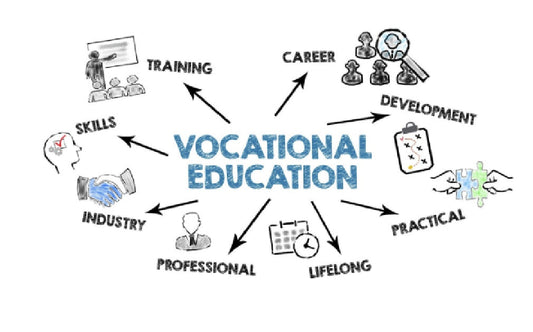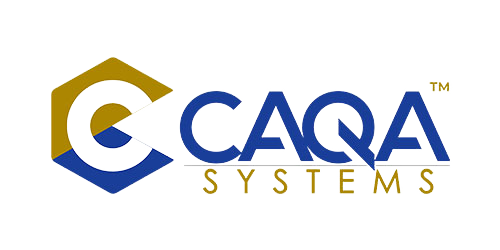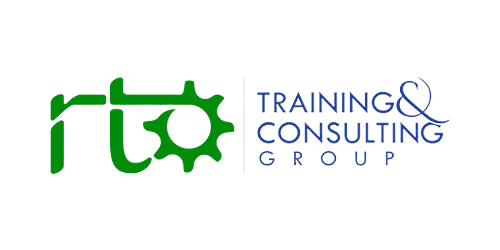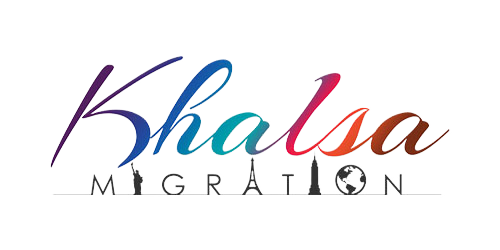Beyond the Status Quo: Reimagining Access to Skills Development
In the landscape of Australian education, Vocational Education and Training (VET) represents a critical pathway to employment and economic mobility for millions of citizens. From construction and manufacturing to healthcare and digital technology, VET programs offer practical, skills-focused training that directly connects to workforce needs. However, beneath the surface of this essential educational system lies a complex web of accessibility barriers that prevent many Australians from benefiting fully from vocational opportunities. As the nation grapples with evolving workforce demands, technological transformation, and demographic shifts, ensuring equitable access to quality VET has become not just a matter of educational policy but a fundamental economic and social imperative. What does true accessibility look like in vocational education, and how can Australia's VET sector evolve to serve all citizens regardless of their circumstances?
The VET ecosystem in Australia encompasses a diverse range of providers and qualifications, serving approximately 5.1 million students annually through Technical and Further Education (TAFE) institutions, private Registered Training Organisations (RTOs), enterprise providers, and community education centres. This network delivers credentials ranging from Certificates I-IV to Diplomas and Advanced Diplomas across hundreds of occupational fields. Unlike the university pathway, VET promises direct relevance to workplace requirements, shorter completion times, and often lower financial barriers to entry. For many—including early school leavers, career changers, and those seeking specific technical skills—VET represents the most practical route to sustainable employment. Despite this promise, participation data reveals troubling disparities in who accesses and completes vocational training, with significant gaps along socioeconomic, geographic, cultural, and ability lines.
The Geographic Accessibility Challenge: Beyond Metropolitan Boundaries
Geographic accessibility stands as perhaps the most visible barrier to equitable VET participation across Australia. The concentration of training facilities in metropolitan areas and larger regional centres creates a stark divide between urban and rural communities. In major cities like Sydney, Melbourne, and Brisbane, prospective students typically have multiple providers to choose from, offering diverse program options, scheduling flexibility, and specialised facilities. By contrast, those in rural and remote areas often face extremely limited local options, if any exist at all.
Consider the experience of a young person in a remote farming community in Western Queensland or the Northern Territory. Their nearest TAFE campus might be hundreds of kilometres away, making daily attendance impractical. Even a regional centre with basic training facilities may lack programs in emerging fields like renewable energy, advanced manufacturing, or digital technology—precisely the sectors creating stable, well-paid jobs in the modern economy. While online learning has expanded in recent years, many vocational qualifications require hands-on practice with specialized equipment that cannot be replicated virtually. A construction apprentice needs physical access to building materials and tools; a healthcare trainee must practice clinical skills with appropriate supervision and equipment.
This geographic barrier creates a troubling cycle: areas with limited access to vocational training often experience the most severe skills shortages, yet without local training options, young people either leave these communities for education or remain without qualifications. Either outcome undermines regional development and economic sustainability. The distance factor also compounds other barriers—travel costs, time away from family responsibilities, and potential loss of income during training periods make geographic remoteness not just a physical challenge but an economic and social one as well.
Financial Accessibility: When Cost Obstructs Opportunity
While generally more affordable than university education, financial barriers still prevent many Australians from accessing vocational training. The cost structure of VET programs varies widely, with government subsidies targeting certain industries and qualification levels but leaving significant gaps. A Certificate III in Commercial Cookery might cost between $3,000-$15,000 depending on provider type, subsidy eligibility, and student circumstances. For Advanced Diplomas in fields like Building Design or Network Security, costs can exceed $20,000. These figures typically exclude additional expenses for textbooks, equipment, uniforms, and industry certification fees that are often essential for employment outcomes.
Government financial support mechanisms, including VET Student Loans (VSL), Free TAFE initiatives in some states, and various subsidy schemes, have improved affordability for many students. However, eligibility restrictions, loan caps, and the limited range of qualifications covered create significant blind spots in the support system. Many essential middle-skill occupations fall outside priority funding areas, while some students—particularly those with previous qualifications or complex educational histories—may be ineligible for financial assistance despite genuine need.
For low-income Australians, particularly those in precarious employment or with caregiving responsibilities, the financial calculation extends beyond direct tuition costs. Training often requires reducing work hours, paying for childcare, covering transportation expenses, and potentially relocating—all representing income sacrifices that many families simply cannot absorb. These financial pressures disproportionately affect single parents, casual workers, and those already experiencing economic disadvantage, effectively pricing them out of skills development that could improve their long-term financial security.
The international student segment faces even steeper financial barriers, with tuition fees for vocational qualifications typically two to three times higher than domestic rates. While this differential pricing supports the sector's financial sustainability, it creates a system where access is heavily determined by economic capacity rather than aptitude or potential contribution to the Australian workforce. These financial obstacles undermine VET's core purpose of providing accessible skills pathways and perpetuate cycles of economic disadvantage by limiting who can access the training needed for occupational mobility.
Cultural Barriers: Creating Inclusive Learning Environments
Beyond geographic and financial considerations, cultural accessibility represents a critical dimension of equitable VET provision. For Indigenous Australians, culturally responsive approaches to vocational training remain inconsistent across the sector. Despite representing approximately 3.8% of Australia's population, Aboriginal and Torres Strait Islander peoples achieve VET completions at disproportionately lower rates than non-Indigenous Australians, particularly at higher qualification levels and in growth industries.
Traditional VET delivery often fails to incorporate Indigenous perspectives, learning styles, and community priorities, creating environments where First Nations students feel marginalised or disconnected from their cultural identity. Standardised assessment approaches may not recognise or value Indigenous knowledge systems, while curriculum content rarely acknowledges the unique contributions and approaches of Aboriginal communities to various industries. Technical training in fields like land management, conservation, tourism, and community services could significantly benefit from Indigenous knowledge, yet this integration remains exceptional rather than standard practice.
Cultural barriers extend to culturally and linguistically diverse (CALD) communities as well. For many migrants and refugees, navigating the complex landscape of Australian vocational qualifications presents significant challenges. Language requirements, unfamiliar assessment methods, and limited recognition of overseas qualifications or prior learning create substantial obstacles. A qualified tradesperson from Southeast Asia or the Middle East may need to completely retrain in Australia despite having years of practical experience, while limited English proficiency may mask genuine technical competence in practical fields.
These cultural barriers result not just in reduced participation but in a misallocation of human capital, with skilled individuals unable to contribute fully to industries experiencing workforce shortages. When VET environments fail to reflect Australia's multicultural reality or accommodate diverse approaches to learning and demonstrating competence, they systematically exclude potential students who could bring valuable perspectives and skills to the workforce.
Disability Inclusion: Universal Design for Skills Development
For people with disabilities, accessing vocational education presents unique challenges that require thoughtful accommodation and inclusive design. Approximately 18% of Australians identify as having a disability, yet they remain significantly underrepresented in VET enrolments and completions. Physical accessibility issues—from building design to equipment configuration—remain common even in newer training facilities. A student with mobility impairments may find workshop spaces inaccessible, while those with sensory disabilities often encounter learning materials or instructional approaches that assume visual or auditory processing abilities.
Beyond physical accessibility, inflexible assessment methods, limited availability of learning supports, and attitudinal barriers among trainers and employers create substantial obstacles. VET's strong focus on standardised competency demonstration can disadvantage students who may achieve vocational outcomes through alternative approaches. For example, a person with autism might excel in technical precision and quality control while requiring accommodations for customer-facing aspects of training, yet rigid assessment frameworks may not recognise these strengths and adaptation possibilities.
The disconnect between disability support in education and employment settings creates further complications. While training providers may offer certain accommodations during coursework, students often lack guidance on transitioning these supports to workplace settings, creating a gap between successful completion and sustainable employment. This disconnect undermines the ultimate purpose of vocational training, which is not merely credential attainment but successful workforce participation.
When VET programs thoughtfully incorporate universal design principles and flexible assessment approaches, they not only improve accessibility for students with disabilities but enhance learning experiences for all participants. Diverse instructional methods, multiple ways of demonstrating competence, and technology-enabled learning accommodations benefit the full spectrum of students while preparing them for workplaces that increasingly value adaptability and diverse perspectives.
Digital Accessibility: The New Frontier for Inclusive VET
The accelerating shift toward online and blended learning models—dramatically accelerated by the COVID-19 pandemic—has created both opportunities and challenges for VET accessibility. Digital delivery can transcend geographic barriers, offer flexible scheduling for students with work or family commitments, and provide customisable learning experiences that accommodate different needs and paces. However, the digital dimension introduces new forms of exclusion that must be addressed for truly equitable access.
The "digital divide" in Australia remains significant, with broadband access, quality, and affordability varying dramatically by location and socioeconomic status. In 2023, approximately 13% of Australian households still lacked reliable internet access, with rural and remote areas experiencing the greatest connectivity challenges. Beyond simple connectivity, digital literacy represents a critical prerequisite for successful online learning. Many potential VET students—particularly older career changers, those from disadvantaged backgrounds, or individuals with limited previous education—may lack the technical skills needed to navigate learning management systems, video conferencing platforms, or industry-specific software.
Device access presents another barrier, as effective participation in online vocational training typically requires more than a smartphone—specialised software, adequate processing power, and appropriate peripherals like webcams or drawing tablets may be necessary, depending on the field of study. Without equitable access to these tools, digital delivery can reinforce rather than reduce existing disparities in educational opportunity.
The pedagogical challenges of online vocational training add another layer of complexity. While knowledge-based components adapt relatively well to digital formats, skills-based training requiring physical demonstration, equipment use, or collaborative practice presents significant challenges in virtual environments. Some providers have developed innovative approaches using simulation software, augmented reality, and remote labs, but these solutions remain unevenly distributed across the sector and often require substantial investment in both technology and instructional design.
As digital delivery becomes an increasingly permanent fixture in VET rather than merely a pandemic response, addressing these aspects of digital accessibility will be essential for maintaining the sector's commitment to inclusive skills development. Strategic investment in infrastructure, equipment loans or subsidies, digital literacy support, and pedagogical innovation can transform digital delivery from a potential barrier to a powerful tool for expanding VET access.
Regional Industry Alignment: Training Where Skills Are Needed
One of the most persistent challenges in VET accessibility is aligning training provision with regional industry needs and employment opportunities. The centralised training in metropolitan areas creates a geographic mismatch between skills development and job markets, particularly in sectors vital to regional economies. Mining, agriculture, tourism, and healthcare all experience critical skills shortages in regional Australia, yet local residents often cannot access relevant training without relocating—a barrier that disproportionately affects those with existing community connections, family responsibilities, or limited financial resources.
Innovative approaches to this challenge have emerged in some regions through collaborative models that bring training directly to communities and industries. Mobile training units equipped with specialised equipment can rotate between remote locations, providing periodic intensive training blocks that minimise disruption to work and family commitments. Industry-embedded training, where vocational education occurs primarily at workplaces rather than dedicated educational facilities, allows students to learn in authentic environments while maintaining employment and community connections.
Hub-and-spoke models offer another promising approach, establishing central training facilities in regional centers with satellite connections to smaller communities. These arrangements can leverage technology for theoretical components while providing periodic access to specialised equipment and face-to-face instruction for practical skills development. Such models recognise that accessibility isn't simply about having any training locally available—it's about ensuring that local training aligns with economic opportunities and community needs.
Successful regional training initiatives typically involve strong partnerships between training providers, local industries, and community organisations. When employers actively engage in curriculum development, provide work placement opportunities, and potentially share specialised equipment or facilities, training becomes both more accessible and more directly relevant to employment outcomes. This collaborative approach ensures that VET accessibility translates to genuine economic opportunity rather than merely credential attainment.
Policy Solutions: Systemic Approaches to Accessibility
Addressing the multifaceted accessibility challenges in Australia's VET sector requires coordinated policy responses across different levels of government and stakeholder groups. Funding models represent a critical starting point—moving beyond enrollment-driven formulas toward approaches that specifically resource and reward accessibility initiatives. Performance-based funding that includes equity metrics alongside completion and employment outcomes could incentivise providers to actively recruit and support underrepresented groups rather than focusing primarily on students who are easiest to serve.
Regulatory frameworks also need reform to balance quality assurance with flexibility for innovation in delivery methods. Current approaches often emphasise standardised delivery and assessment, potentially limiting adaptations that could improve accessibility for diverse learners. A more outcomes-focused regulatory model would maintain rigorous competency standards while encouraging diverse pathways to achievement that accommodate different needs, circumstances, and approaches to learning.
Coordinated investment in accessibility infrastructure—from physical facilities and adaptive equipment to digital connectivity and specialised learning resources—requires strategic planning beyond individual provider initiatives. National and state-level investment in shared resources, particularly for high-cost specialisations in regional areas, could significantly improve access without requiring every provider to duplicate expensive facilities. Community learning centers with shared technical equipment, simulation labs accessible to multiple training organisations, and industry-hosted training facilities all represent models for maximising accessibility while managing costs.
Information systems also play a crucial role in accessibility. Navigating the complex landscape of VET options, funding opportunities, support services, and employment pathways presents significant challenges for prospective students, particularly those from disadvantaged backgrounds. Integrated career and course advisory services that provide personalised guidance rather than just information could help individuals identify optimal pathways based on their specific circumstances, abilities, and aspirations. Digital platforms that simplify the comparison of providers, clarify real costs after applicable subsidies, and connect training options directly to employment outcomes would significantly reduce informational barriers to participation.
Measuring Success: Data-Driven Approaches to Accessibility Improvement
Meaningful progress on VET accessibility requires robust measurement frameworks that go beyond simple enrollment statistics. Current reporting often focuses on participation rates for broad demographic categories without examining intersectional factors or distinguishing between different forms of access barriers. More nuanced data collection and analysis could identify specific combinations of factors that create accessibility challenges, guiding targeted interventions rather than one-size-fits-all approaches.
Longitudinal tracking is particularly important for understanding accessibility impacts. Short-term completion metrics provide limited insight into whether VET participation translates to sustainable employment outcomes for diverse learners. Following graduates over time to assess employment stability, wage progression, and career advancement would provide a more comprehensive picture of whether accessible VET truly delivers equitable economic benefits.
Qualitative research also plays an essential role in understanding the lived experience of accessibility barriers. Statistical patterns reveal disparities but often not their causes or potential solutions. Regular consultation with underrepresented communities, focus groups with students who have navigated barriers, and systematic documentation of accessibility innovations can provide crucial insights for continuous improvement.
Transparency in reporting accessibility metrics—both challenges and successes—creates accountability while facilitating knowledge sharing across the sector. When providers publicly report on accessibility initiatives, outcomes for diverse learners, and ongoing challenges, they contribute to a collective understanding of effective practices while maintaining a focus on equity as a core value rather than a peripheral concern.
Accessibility as the Foundation of VET's Future
The future relevance and effectiveness of Australia's VET sector depend fundamentally on its ability to provide genuinely accessible skills development pathways for all citizens. As industries transform through technological change, sustainability imperatives, and global economic shifts, ensuring that all Australians can access appropriate upskilling and reskilling opportunities becomes not just an equity issue but an economic necessity. A VET system that remains inaccessible to significant portions of the population—whether due to geography, cost, cultural barriers, disability, or digital exclusion—cannot fulfill its essential role in workforce development and social mobility.
The accessibility challenges facing vocational education are complex and multifaceted, but they are not insurmountable. Through coordinated policy reforms, innovative delivery models, targeted investments, and genuine commitment to inclusive practices, Australia can build a VET sector that truly serves all citizens, regardless of their circumstances or backgrounds. Such a transformation requires moving beyond traditional models and assumptions about how, where, and for whom vocational education operates.
Ultimately, accessibility in VET is not merely about removing barriers—it's about reimagining vocational education as an inherently inclusive system designed from the ground up to accommodate diverse learners, communities, and pathways. When accessibility becomes a foundational principle rather than an afterthought, the VET sector can fulfill its promise as Australia's most democratic and responsive educational pathway, connecting individuals to economic opportunity while meeting the nation's evolving workforce needs. The time for this transformation is now, as Australia navigates complex transitions that will reshape industries, communities, and individual livelihoods for decades to come.


































